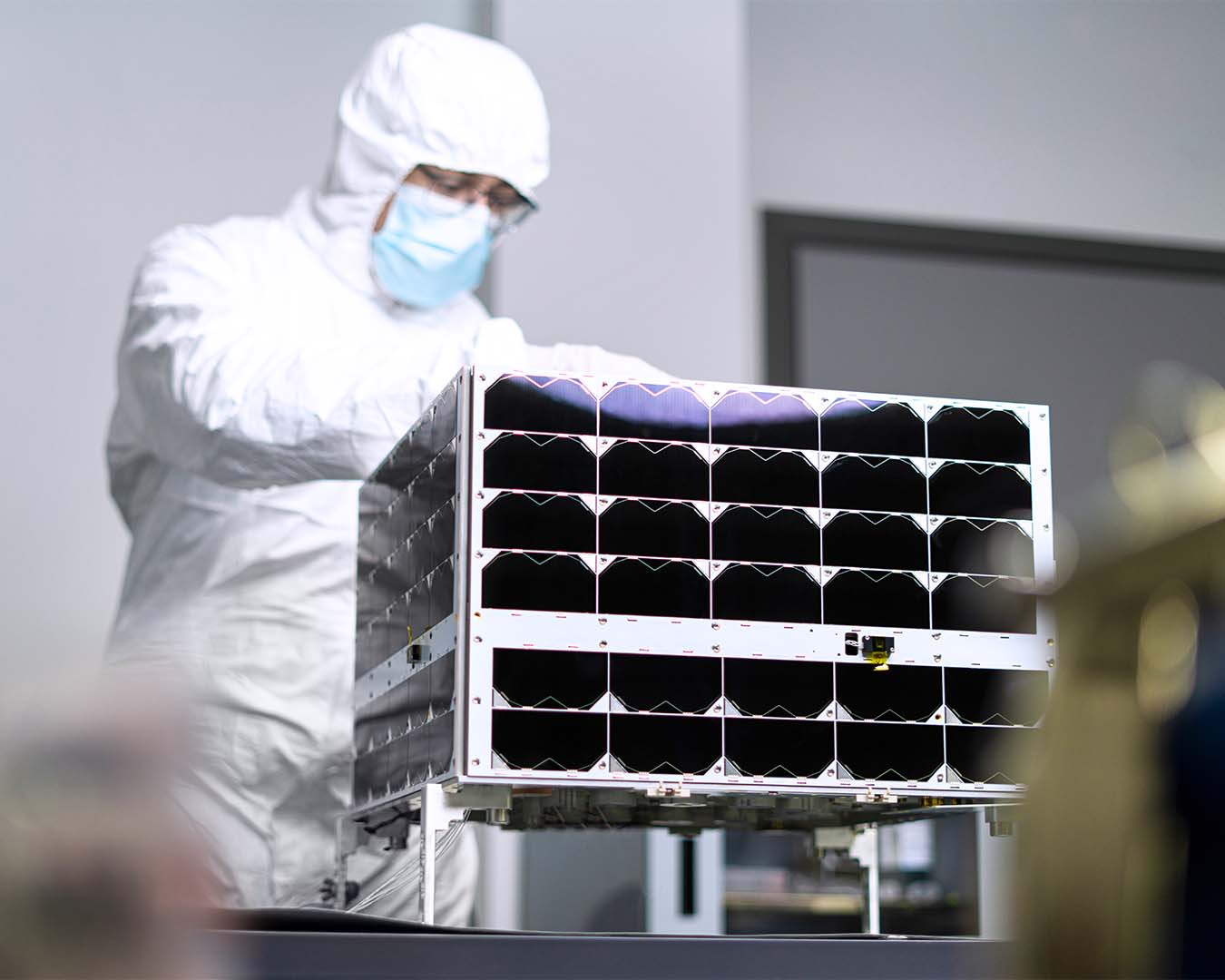

WASHINGTON — OQ Technology of Luxembourg, which raised $13 million in September to build out a small constellation of 5G narrowband nanosatellites for Internet of Things (IoT) connectivity, ordered three additional satellites from Kongsberg NanoAvionics.
NanoAvionics has built three satellites for OQ Technology to date, two of which are already in orbit. The launch of the third — the European Space Agency-backed MACSAT — is on hold following the December failure of an Arianespace-operated Vega C rocket carrying a pair of commercial imaging satellite for Airbus.
“MACSAT was supposed to be launched on Vega-C in March 2023, which, following the December incident with the loss of the Vega-C VV22 mission, has been postponed. Arianespace and ESA were investigating the issue and we are waiting to know when it will be launched,” OQ Technology’s founder and CEO, Omar Qaise, said in a March 15 statement to SpaceNews. “However, with the recent announcement from ESA about the investigation outcome and way forward, we are very confident MACSAT will fly this year.”
Under the three-satellite order announced this week, NanoAvioncs will build Tiger-4, Tiger-7 and Tiger-8 around 5G NB-IoT payloads provided by OQ Technology. NanoAvionics said the three 6U cubesats will be built at a new facility in Vilnius, Lithuania, and will have onboard propulsion for deployment, formation flying and end-of-life disposal. “These three nanosatellites will allow us to grow our constellation, expand our global coverage, and enter new markets,” Qaise said in a statement.
NanoAvionics CEO and founder Vytenis J. Buzas, called the contract “a testament to the great working relationship we have built with OQ Technology over the last few years.” He attributes the repeat business to NanoAvionic’s ” level of standardisation, automation, and experience with communications missions.”
Three in orbit
OQ Technology, which has put up three Tiger nanosatellites since 2018, said in a March 13 news release it expect to have 10 satellites on orbit by late 2023 or early 2024.
OQ Technology has three satellites in orbit:
• Tiger-1, a 6U cubesat built by Denmark’s GomSpace and launched in February 2018 on a Chinese Long March 2D rocket.
• Tiger-2, a 6U cubesat built by NanoAvionics and launched in June 2021 aboard SpaceX’s second Falcon 9 dedicated rideshare mission.
• Tiger-3, a 6U cubesat built by NanoAvionics and launched in April 2022 aboard SpaceX’s fourth Falcon 9 dedicated rideshare mission.
Seven in the pipeline
In addition the Tiger-4, Tiger-7 and Tiger-8 satellites just ordered from NanoAvionics and the already-built MACSAT awaiting the resumption of Vega launches, OQ Technology has the Tiger-5 and Tiger-6 six-unit cubesats on order with Denmark-based Space Inventor.
OQ Technology is also partnering with the United Arab Emirates’ Mohammed Bin Rashid Space Centre (MBRSC) on the development of a 12U modular satellite platform called PHI-Demo, short for Payload Hosting Initiative demonstration.
PHI-Demo will carry an OQ Technology communications payload that stores and forwards data collected from IoT devices. PHI-Demo partner SteamJet Space Systems of Birmingham, England, will supply the satellite’s water-based propulsion system.
“The PHI mission represents a major enabler for us in expanding our global satellite 5G coverage and also business in the [Middle East and North Africa] region,” Qaise said in a January 2022 announcement.

Brian Berger is editor in chief of SpaceNews.com and the SpaceNews magazine. He joined SpaceNews.com in 1998, spending his first decade with the publication covering NASA. His reporting on the 2003 Space Shuttle Columbia accident was…
More by Brian Berger

0 Comments :
Post a Comment